Trelissick - Cornwall - England
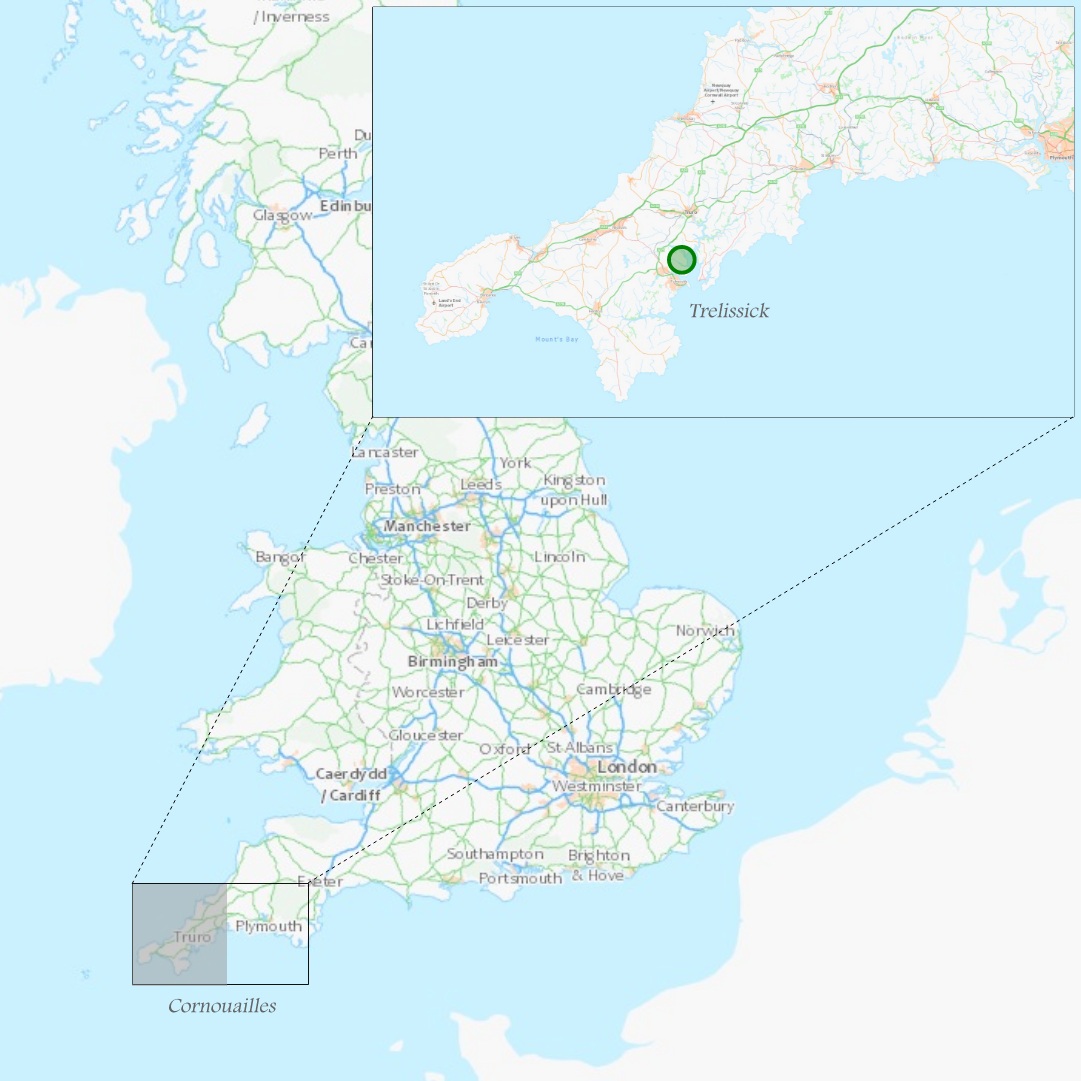
Open Geography Portal UK
Cornwall, a land of acclimatisation and an open-air botanical laboratory
Cornwall is a land of gardens. From the early 19th century onwards, boatloads of oriental plants arrived in the south-west of England, where the micro-climate created by the Gulf Stream was at work. It was all the rage, a must-have for aristocrats. A house? Yes, but a castle is even better. An estate overlooking the sea? Certainly! With a view focused from the largest of windows! A collection garden with exotic plants in the hollows and orangeries? More than ever!
Here, stories of explorers are a dime a dozen. While some are fervent explorers, others take advantage of the comings and goings of ships to add their orders to the already overflowing cargoes from the colonies.
Botanists will find their way around if I mention just a few important names:
-
William Lobb paved the way for the attraction of exotic plants. He is credited with introducing the Araucaria araucana to Europe.
-
Robert Fortune (fortunei) acclimatised his Asian finds in Cornwall, particularly at Trelissick. From the other side of the world, he imported countless types from a wide range of genera: Euonymus, Osmanthus, Trachycarpus, Cephalotaxus, Mahonia, Paulownia, Rhododendron, Taxus, Saxifrage, etc.
.jpg)
.jpg)
Paulownia tomentosa (Trelissick) — Rhododendron fortunei ssp. discolor
- Ernest Henri Wilson (wilsonii), following in Fortune's footsteps, unearthed Actinidia deliciosa and Davidia involucrata, as well as a number of magnolias and rhododendrons, maples, chestnuts and Cryptomeria.
.jpg)
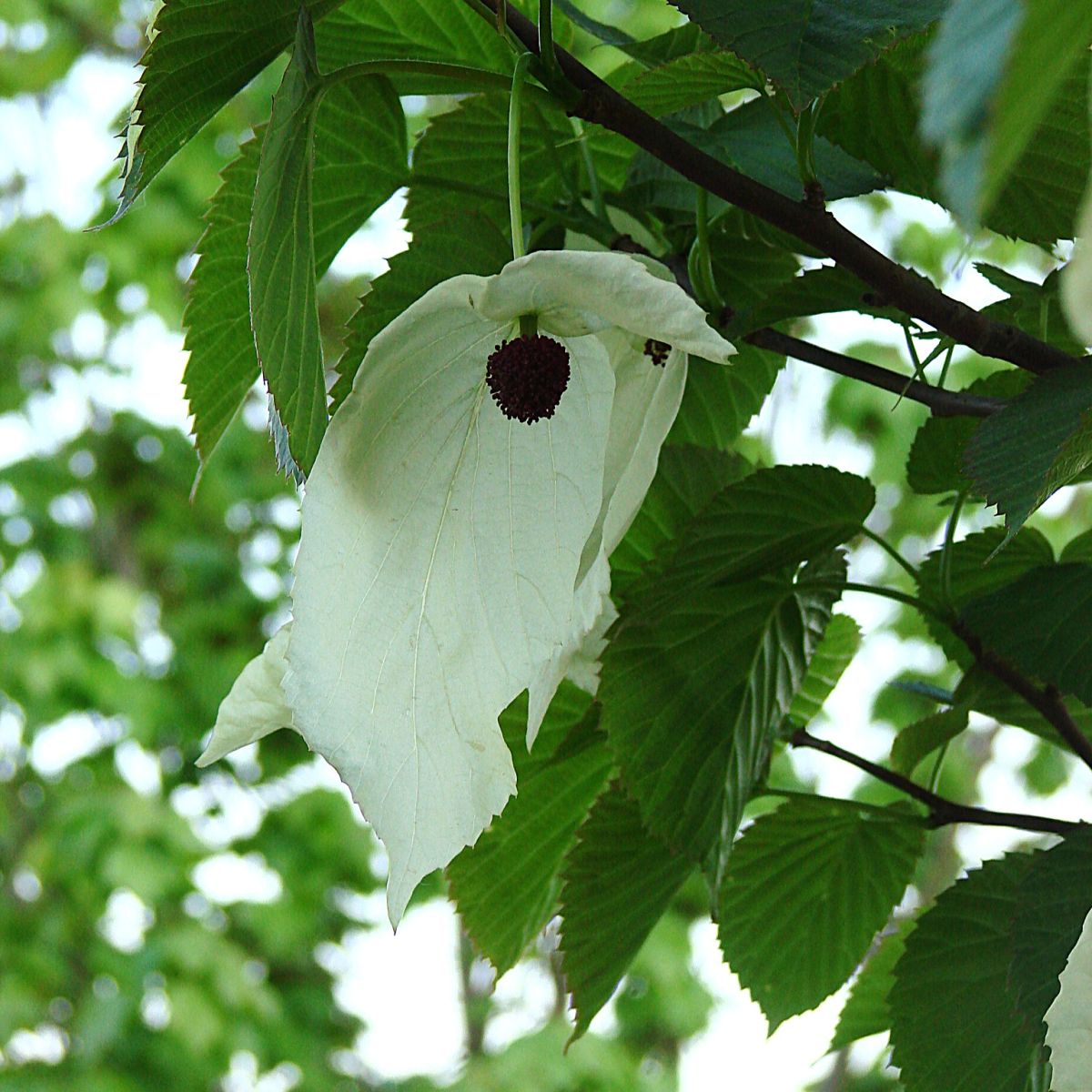
Cryptomeria Japonica (Trelissick) — Davidia involucrata
- Joseph Dalton Hooker (hookeri, hookerianum, hookeriana), son of Sir William, then Director of Kew Garden. He still delights us with Crinodendron, Phormium, Raphia, Sarcococca, Gaultheria and Deutzia.
The entire English botanical world acclimatised its plants to Cornwall. It's no wonder that today's Cornish heritage fascinates us with so many of its wonders.
The Trelissick estate, a history, a conservatory among others, but a magnificent one
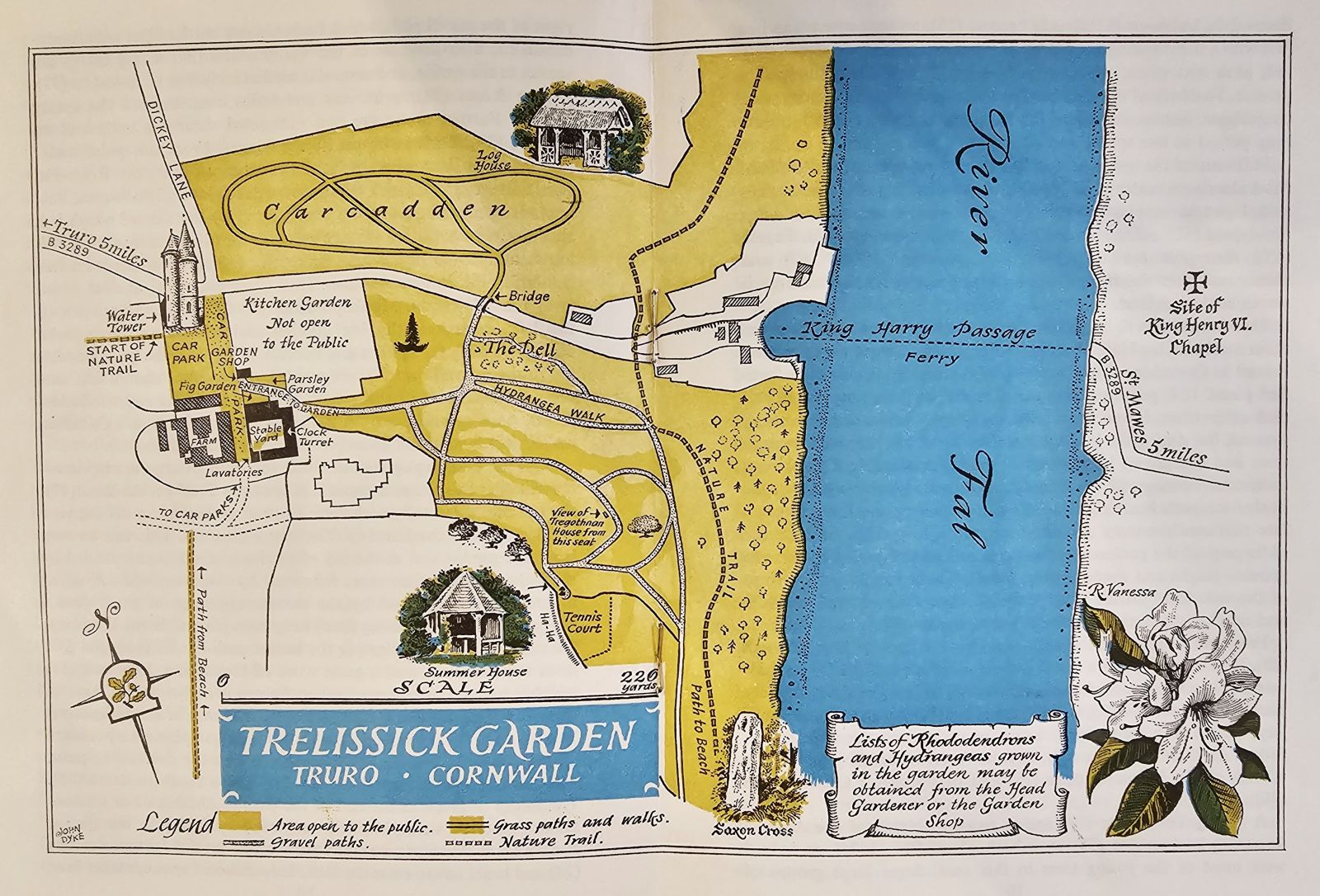
Reproduction of the map published in the estate guide in 1974
Trelissick has everything to make us dream: a garden in Cornwall, a land of tradition and rhododendrons, in 1955 it joined the National Trust, a guarantee of quality and English refinement.
.jpg)
During our visit, we'll be highlighting some of the region's typical features, the ones we love.
Typically British, the National Trust guarantees
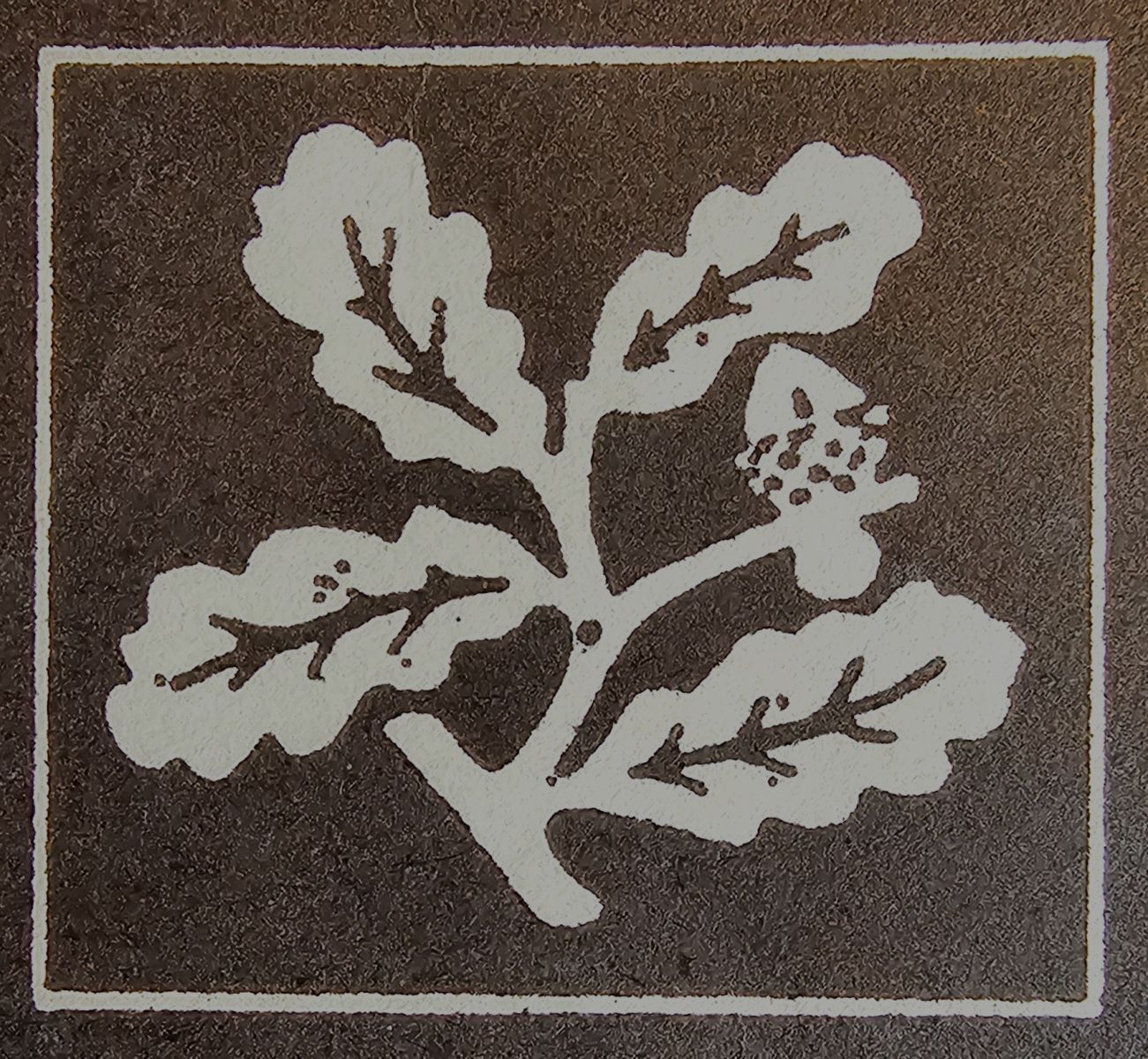
In the past, estates were emancipated under the expert hands of their owners. Then interests evolved towards other occupations, and the estates became unmanageable, financial pits. In a concern dear to England, the safeguarding and conservation of such a heritage became a real preoccupation. In 1895, the National Trust was created, unaware that within a century it would become the second largest landowner in the kingdom, after the Crown, with more than 300 monuments and 200 gardens to its credit.
.jpg)
Restoration, maintenance and hospitality are the company's watchwords, and you're never more welcome than at a National Trust property. We first visited Trelissick in 1999 and 25 years on, the place is almost unrecognisable - majestic, refined, exquisite, just perfect. More than just preserving the sites, the institution improves, strengthens, develops and bustles about like an anthill.
Some special features of Cornish sites :
Dry stone walls are an art form. They can be found in great numbers in the countryside. They mark the boundaries of meadows and bury narrow roads. In the English hedgerows, for example, you can't even make out a driveway. There, the vegetation invades them right to the top to such an extent that the structural stonework completely disappears.
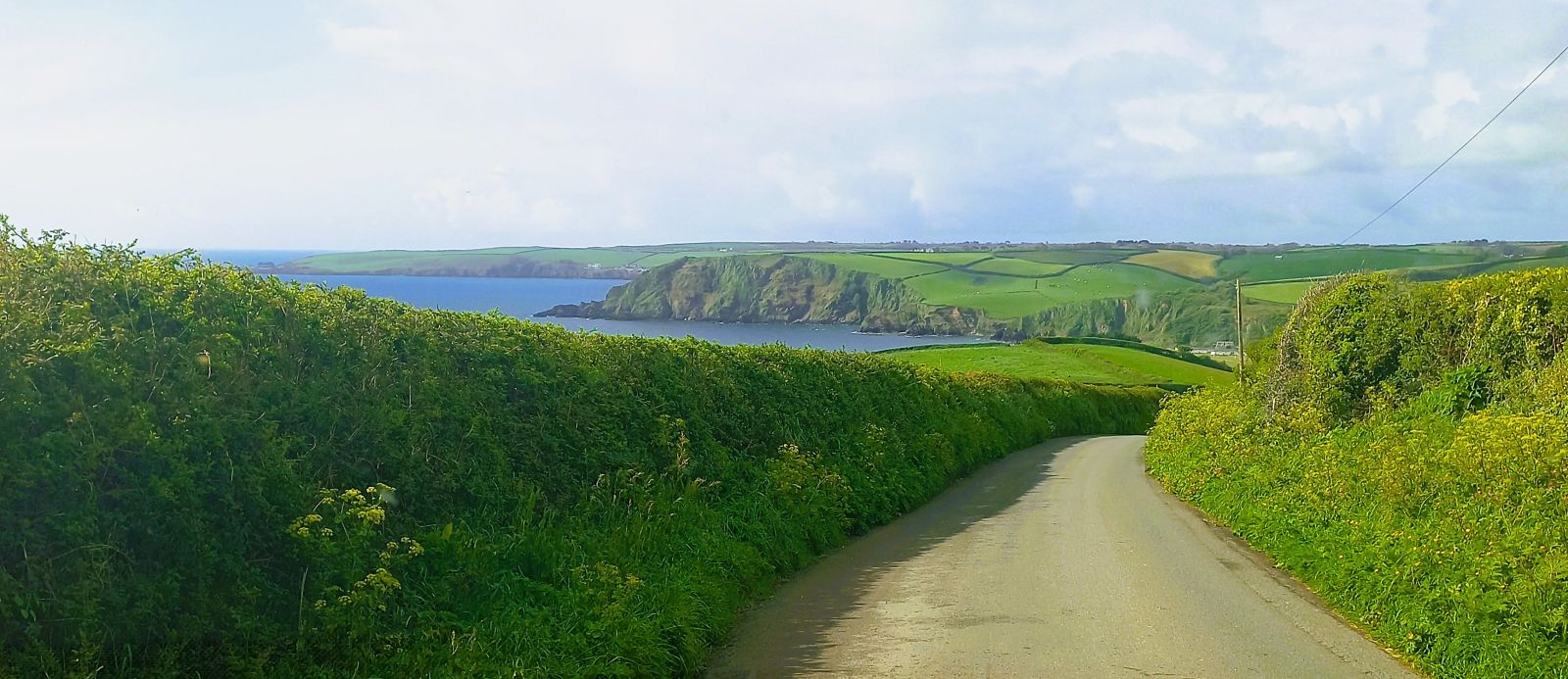
Here at Trelissick, as in many other gardens, the stones are laid in hollow joints. The patterns vary according to the inspiration of the craftsmen.
.jpg)
.JPG)
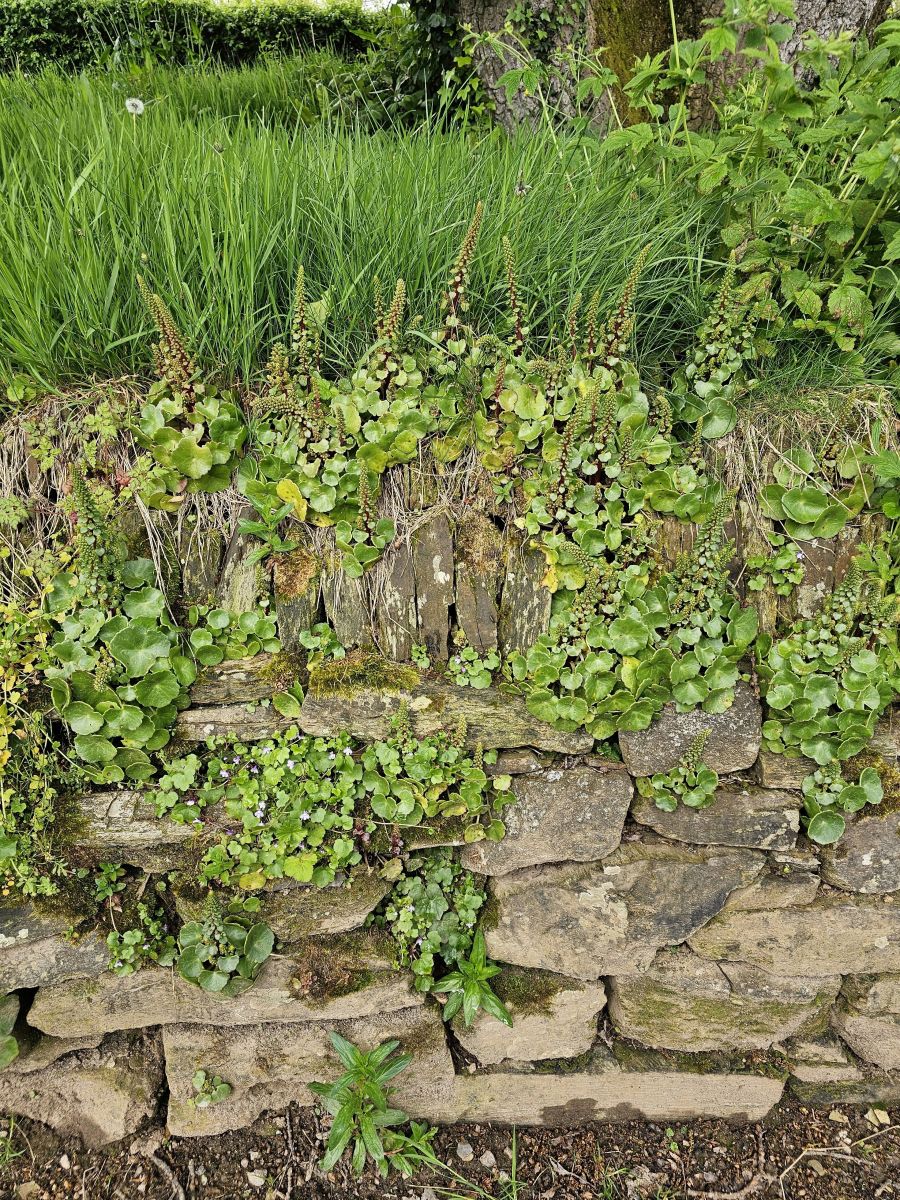
.jpg)
Tradition has it that the site provides the materials. It is customary for stonework to spread from the walls to the floors in pretty pebble mosaics. This custom is found throughout the world, under English influence, from Singapore to Madeira, in many variations and colours, depending on the local rock strata.
.jpg)
.jpg)
Eating, drinking tea and shopping are essential complements to a visit to an English garden, and in Cornwall, more so than ever.
.jpg)
.jpg)
.jpg)
Plant cathedrals - my favourites
Haven't I ever told you? I love cathedrals, but not just any cathedrals. Have you ever been inside one of these grandiose, bewitching places? They pick you up and pierce you, take you away. They remind you of the need for human humility, which we are all increasingly lacking. If man's work is magnificent, nature's work moves me even more. I love to swoon over these gigantic trees, to enter them and never want to leave. One day I'll write a book about them, they fascinate me so much. Trelissick has two impressive trees.
Cryptoméria japonica
Planted in 1898, I could have sworn it was much older, given its build. I quickly came to understand his complicated life, his wounds, his broken bones, his downfalls. But he rebuilt himself with each blow he received. Nothing has been strong enough in 127 years to bring him down, and no one has seen fit to grant him salvation, to spare him from his suffering, even though he must have been pitied on many occasions. The English are like that, it doesn't matter what he looks like, as long as life was circulating in his xylem and phloem, you had to let him have it. And what a joy it is today to be able to contemplate it, to walk on it, to soak it up.
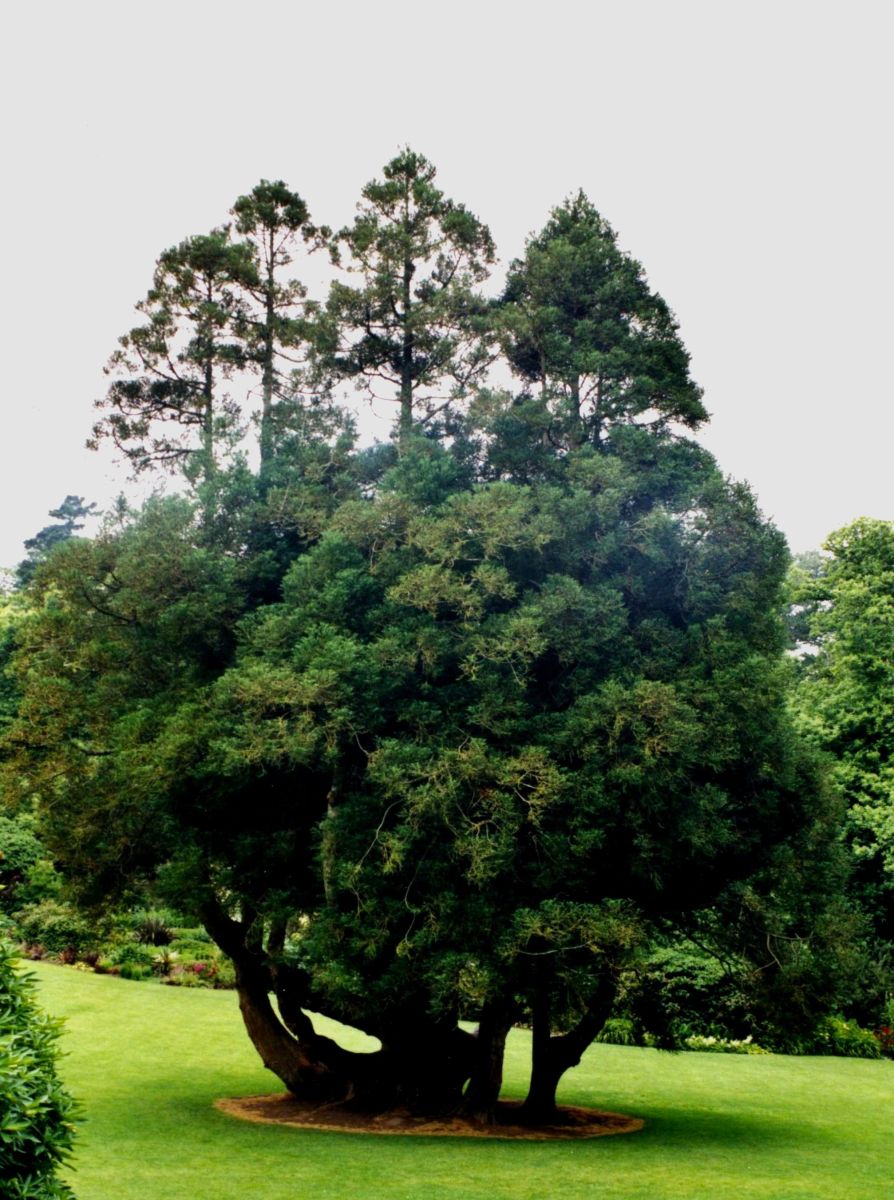
.jpg)
Trelissick 1999 (101 years) — 2024 (125 years)
.jpg)
.jpg)
Cet arbre est une forêt à lui tout seul
.jpg)
.jpg)
.jpg)
We're always proud to pose with these stars
.jpg)
.jpg)
Rhododendron Cornish
Not far away, bordering the same expanse of grass, slightly higher up, here is one that fills the space to the brim. There are many gigantic rhododendrons in Cornwall, some much taller, some much wider and some much older, but this one has it all. Isolated, it has been able to grow steadily around its crown, giving it an unrivalled harmony. And with its name, it is the emblem of the county.
a.jpg)
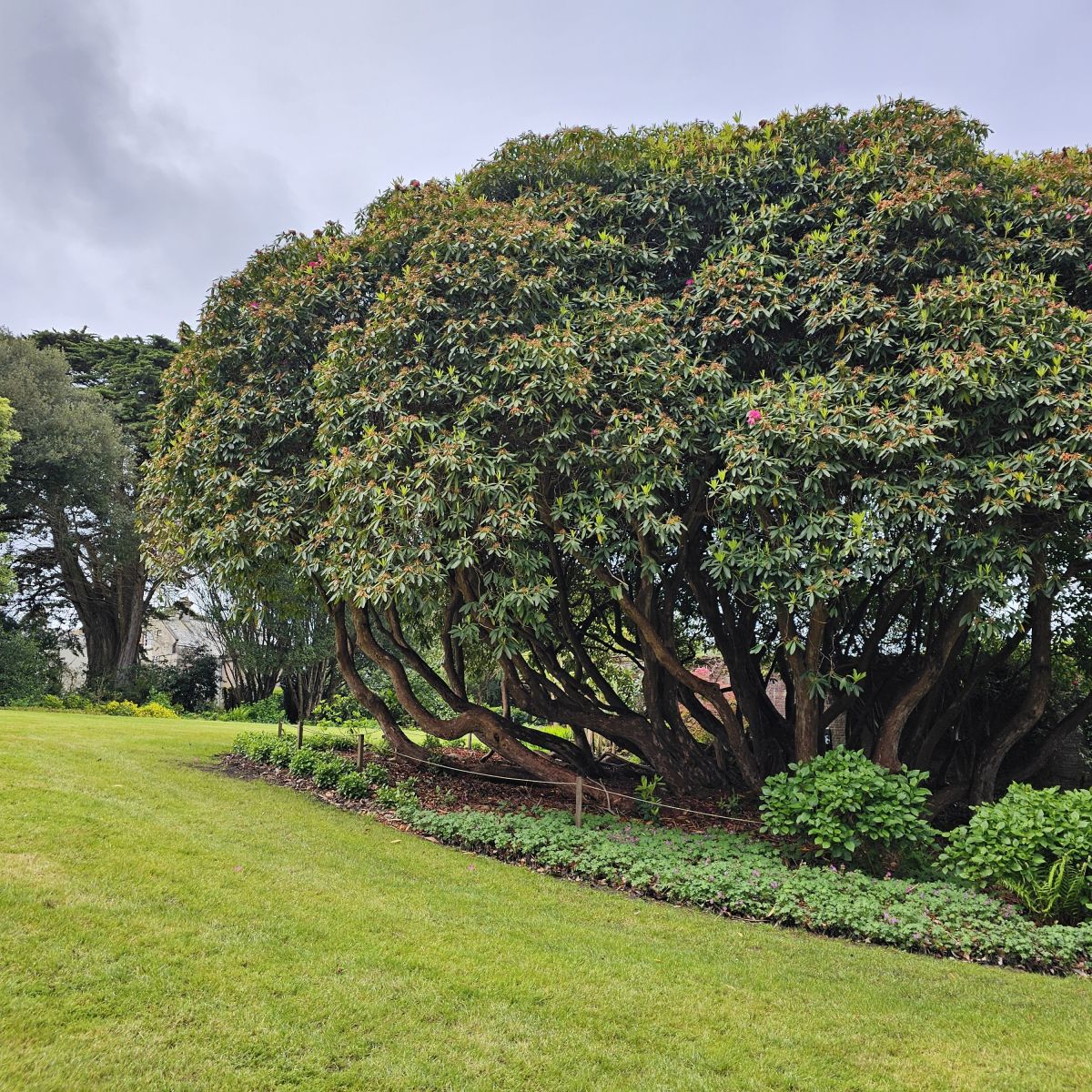
a.jpg)
Resolutely Cornish, creating a garden, shaping it and bringing it to life
Shaping the landscape: a long-standing English tradition
Acclimatising plants is an activity that could be carried out in a purely systemic way, in rigorous and orderly rows. But if the aim is to bring a little exoticism and dream to our temperate landscapes, it's obvious that we want to see what happens right away. To welcome their uprooted newcomers, the aristocrats have fashioned jewel cases brimming with a thousand subtleties, discoveries and surprises; an approach that comes as close to nature as possible, but with incredible mastery.
.jpg)
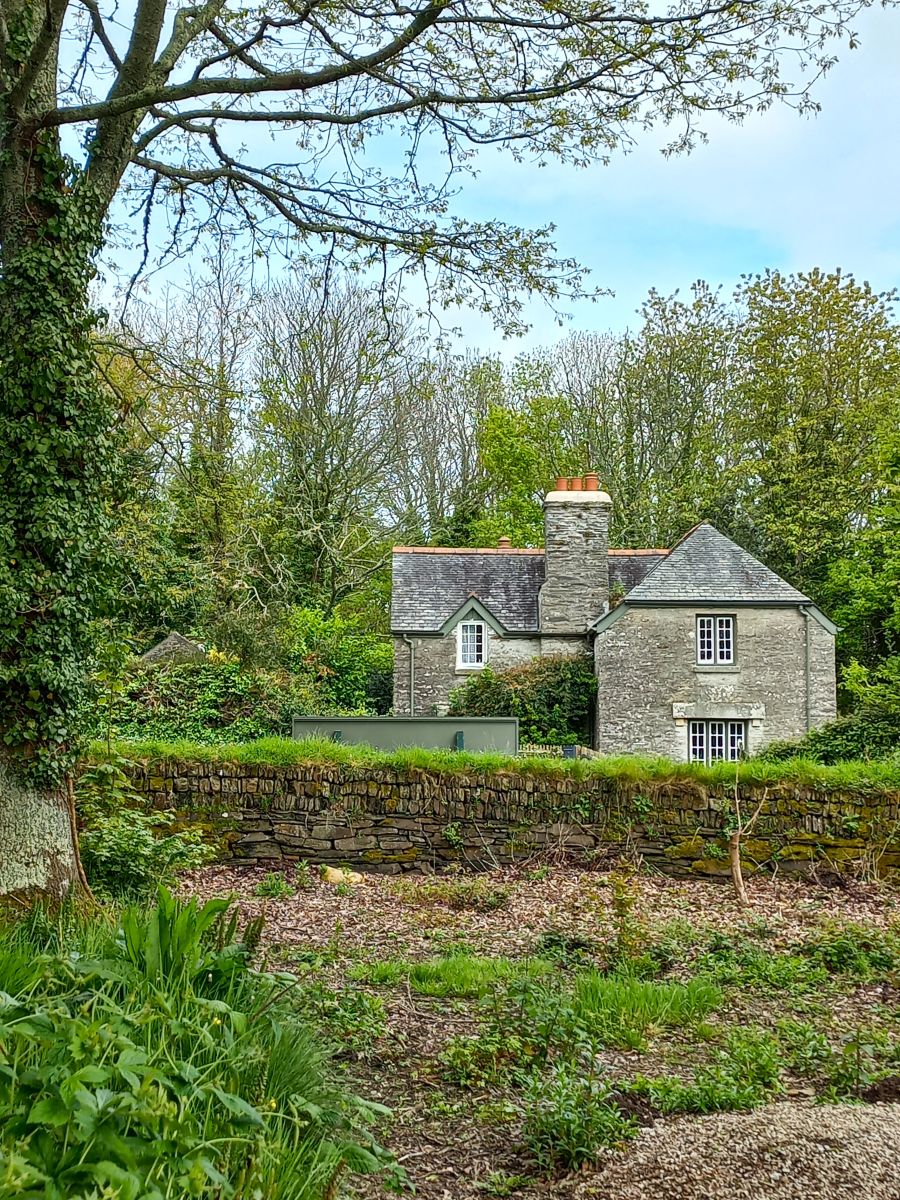
We're making the most of the existing heritage, a guarantee of authenticity. The water tower, the farmhouse
Winding paths, sometimes steeply sloping, with views plunging or rising, open or closed, will guide you to as many corners of paradise as you can imagine..
.jpg)
.jpg)
Other views open up towards the sea, which is never far away. The majestic old oak trees have been preserved, isolated and respected.
a.jpg)
The compositions are perfectly balanced, colourful but not too colourful, the greens soothing, the freshness of the spring foliage awakening, the floral frames accompanying and highlighting.
.jpg)
The follies are interspersed throughout the walk as many contemplative pauses.
.jpg)
.jpg)
.jpg)
It's also a discreet way of commemorating.
.jpg)
The peaceful view from Jack's Summer House stretches across the Carrick Roads estuary. Jack moved into Tressilick as soon as it was acquired by the National Trust in 1955 and did not leave until his death.
.jpg)
.jpg)
Plant rhododendrons, Cornouaille is an ideal place for them
They are the very embodiment of Asia's rich flora, and bear witness to the enthusiasm of European botanists for this exotic flora.
They grow so vigorously in Cornwall that the climatic conditions suit them so well. Here are some of the plants that impressed us.
Rhododendron griffithianum
Originally from the Himalayas, it was introduced to Europe in 1850 by Joseph Dalton Hooker. Many interesting hybrids have been obtained from this parent, notably the entire Loderi series (‘Pink George’, ‘Pink Diamond’). With age, its bark becomes particularly remarkable.
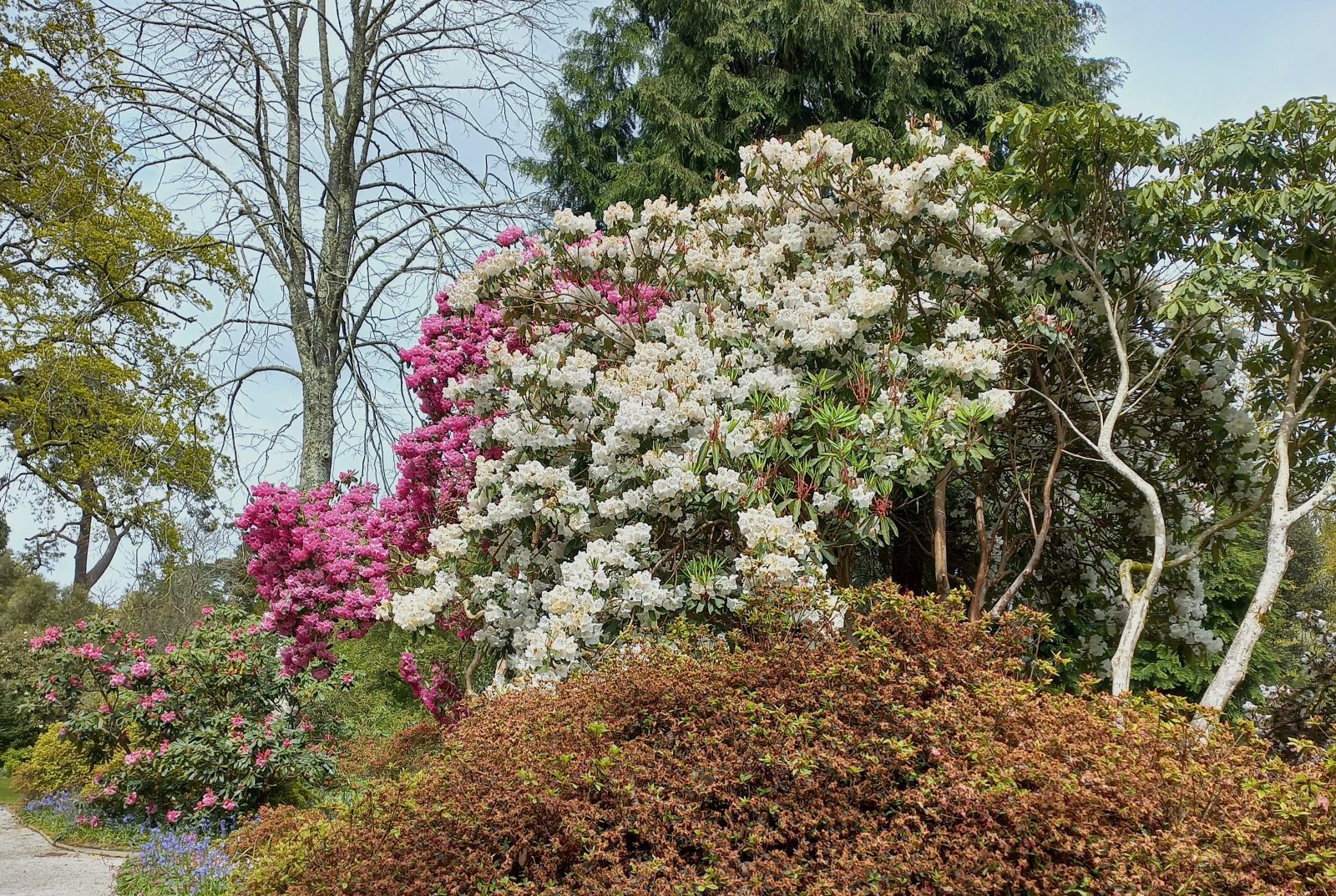
.jpg)
.jpg)
Rhododendron falconeri subs Eximium
This subspecies is native to the Himalayas, Bhutan and Arunachal Pradesh in India more specifically. It was imported to Europe in 1850 by the botanist Thomas Booth. Its leaves are imposing, up to 45 cm long, with a downy cinnamon underside. It has a harmonious, spreading habit. Its cinnamon bark also peels with age.
.jpg)
Rhododendron decorum
Native to south-west China and northern Burma, it was first described in 1886 by the French botanist Adrien René Franchet. It was introduced to Europe a year later at the Jardin des Plantes in Paris by Father Jean-Marie Delavay. Other specimens were later imported by Ernest Wilson, George Forrest and Frank Kingdom Ward.
.jpg)

Rhododendron montroseanum
First described in 1954, it is native to the mountainous regions of Tibet, Bhutan and Burma. It was named in honour of the Duchess of Montrose. Its large, thick leaves are particularly attractive.

Rhododendron Cynthia
This hybrid was developed in 1856 by two English nurserymen, John Standish and Charles Noble. It was introduced 14 years later to the delight of gardeners. Named after the Greek goddess of the moon, in keeping with its elegance and beauty. It was awarded the Royal Horticultural Society's Award of Garden Merit in 1993, 130 years later. It is very hardy, down to -26 degrees.
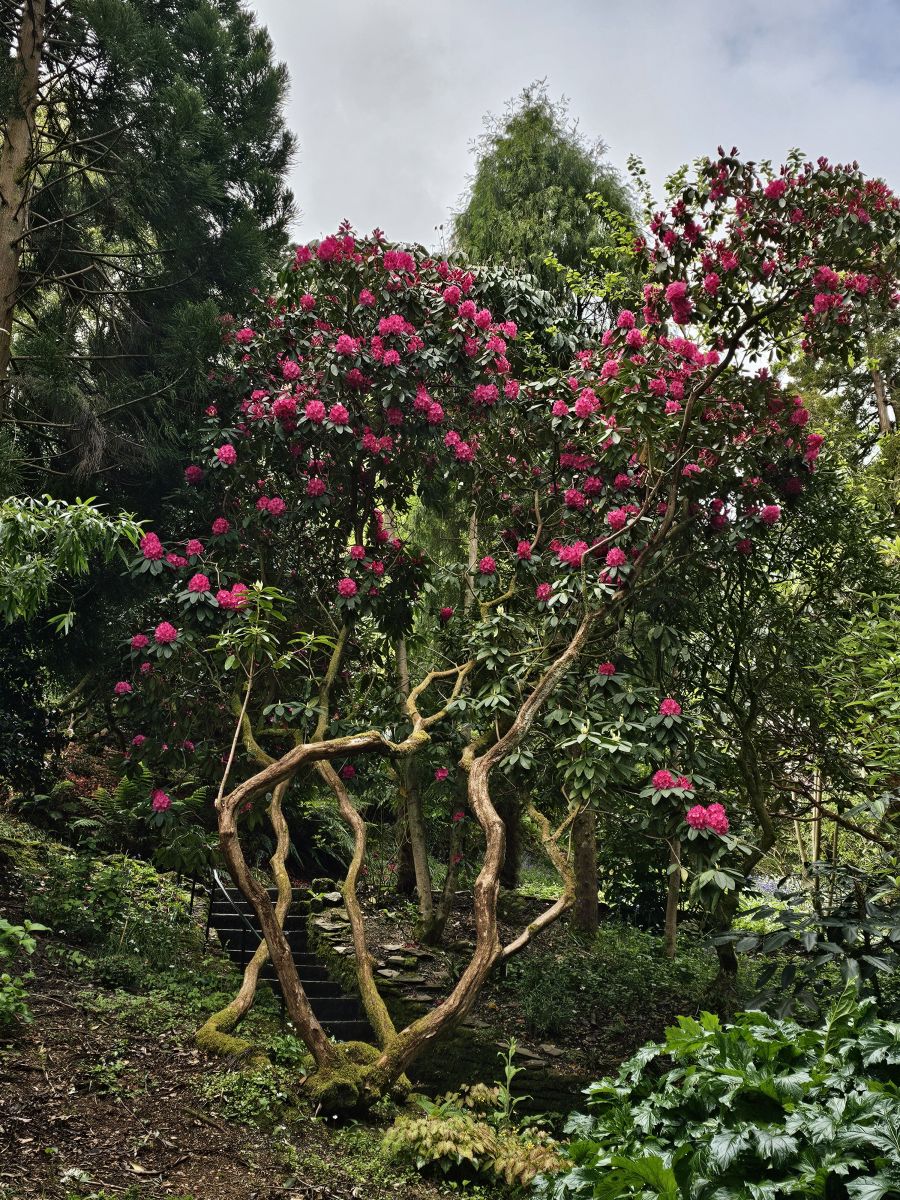
.jpg)
Rhododendron Gauntlettii
Obtained in 1903 from the Cornish nursery V.N. Gauntlett & Co. it is a cross between Rhododendron griffithianum (mother) and Rhododendron arboreum (father). Robust, generous and fragrant, it has everything you could wish for.
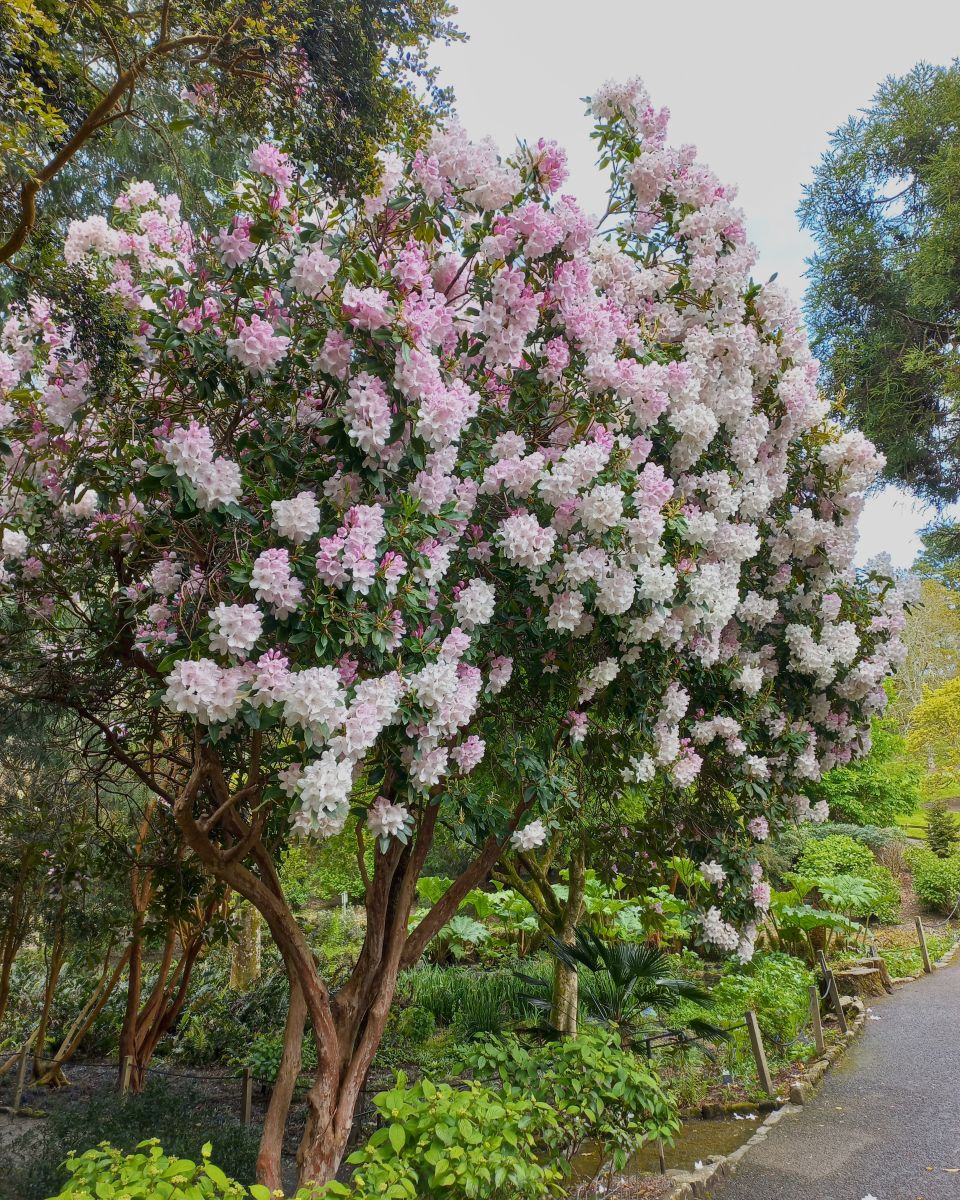
.jpg)
.jpg)
Rhododendron Veryan Bay
Named after the place, this rhododendron was born near Veryan Bay, which opens onto the Caerhays estate. J.C. Williams obtained it in 1929 by crossing Rhododendron pseudochrysanthum and Rhododendron Williamsianum. A picturesque little tree that twists with age, its colour is fabulous.
.jpg)
.jpg)
Rhododendron Kilimanjaro
This spectacular hybrid Rhododendron was obtained in 1947 by Lionel de Rothschield. The cross was made between Rhododendron elliottii and a member of the ‘Dusty Maid’ group. It is a very fine example of British horticultural excellence in the 20th century.
.jpg)
.jpg)
Rooting trees to carry on the tradition
Cupressus macrocarpa
Monterey cypress, originally from California, is an impressive conifer that is becoming established throughout Cornwall. It arrived here in 1838 and was all the rage. It adapts perfectly to sea spray and strong winds, and is a marvellous landscape sculptor, allowing itself to be sculpted by the fierceness of coastal conditions. Its crown is broad and generous, its bark well shaped and its needles give off a fresh, lemony scent. We saw many remarkable trees, like landmarks in the bucolic landscape. The impressive subject of Tresco Abbey, in the Scilly archipelago, is undoubtedly the most impressive. You can read more about it in our article Tresco abbey Garden.
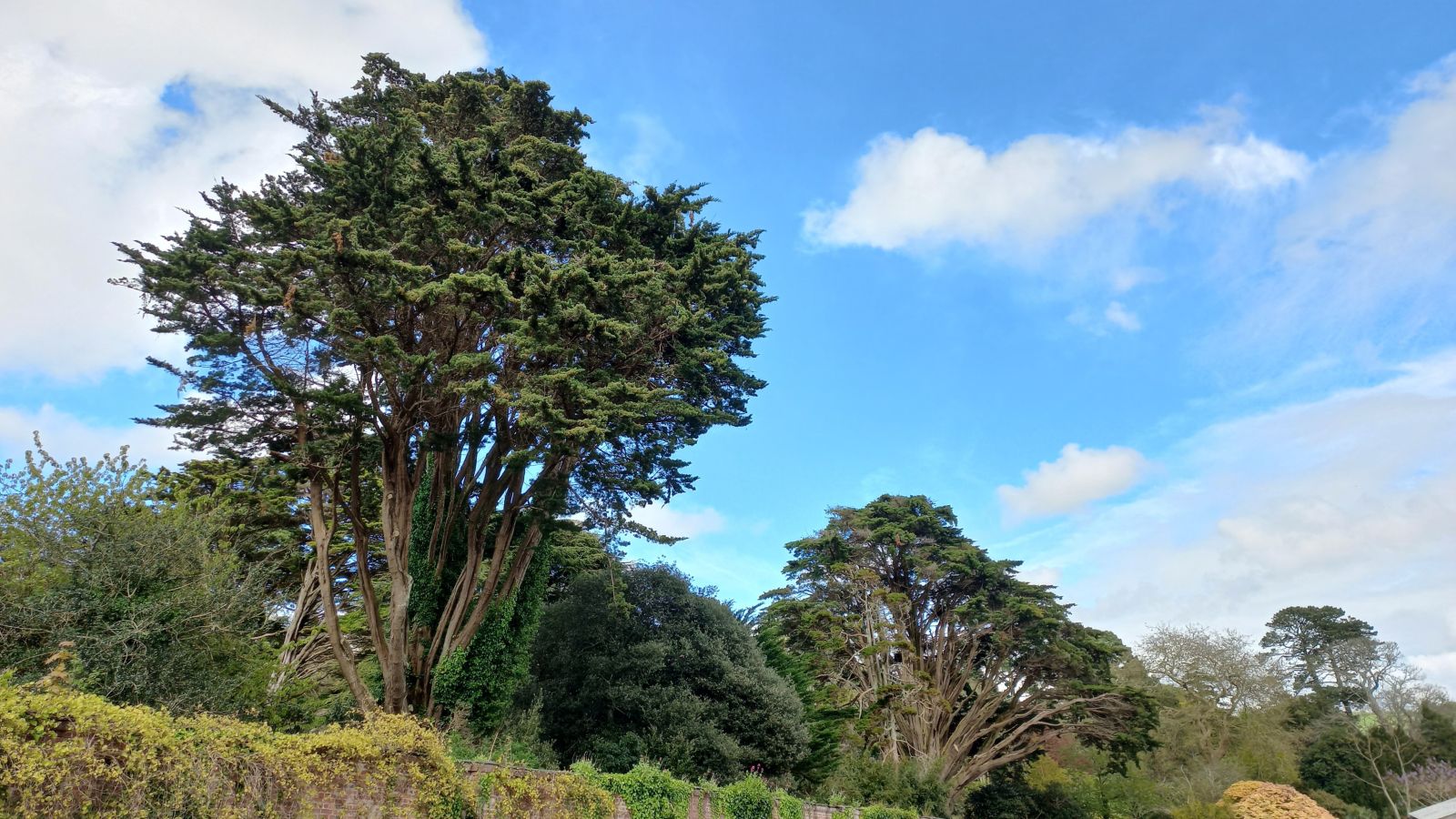
.jpg)
.jpg)
Oaks
More local and historical this time, oak comes in many varieties. In England, Royal Oak Day is celebrated on 29 May. It was in 1651 that King Charles II, still a young man, avoided death by climbing a remarkable oak tree in the Midlands, during the War of Worcester. Now the undisputed symbol of the monarchy, the British venerate and respect it. It lives on for a long time, punctuating the landscape with its tortured harbour. Even in death, it remains in place, as the sacred wood is not to be touched. Legend has it that Sherwood's Major Oak is over 1000 years old, the same tree that served as Robin Hood's landmark.
The old trees are most impressive, gnarled, twisted and majestic. At Trelissick, we give them their place among the spring heather and azaleas.
.jpg)
.jpg)
.jpg)
.jpg)
Buying a house with a sea view
In this region with its mild weather and almost endless coastline, it was customary to have a unique view of the sea. The setting had to be designed, reshaped if necessary, to create the most balanced picture possible.
.jpg)
This trend can be found in the renowned gardens and estates of Trebah, Caerhays and Trelissick. The valleys are shaped, the plants pruned or removed to create landscape compositions that are pleasing to the eye.
The views are designed to encourage contemplation.
The house is generally built in the best location so that you can swoon over the tranquil spectacle, sheltered from the occasional rain shower.
.jpg)
But it's undoubtedly from the living room that the view is the most comfortable, the most privileged position.
.jpg)
.jpg)
At Trelissik, the pleasure is also shared in an unusual place, the orangery. It's a magnificent place.
.jpg)
.jpg)
.jpg)
.jpg)
Discovering Trelissick under Laurent's expert eye, spotting plants of multiple interest
Acer palmatum Seiryu
Here's a Japanese maple that surprised us with its size, presence and generosity. The “Seiryu” variety is a Japanese selection, known for its luminous green foliage, which is tender and beautifully cut, but also for its upright habit. Now well beyond his teenage years, it has abandoned its upright vigour, becoming less arrogant and more mature and generous. Its name means emerald dragon.
.jpg)
.jpg)
Daphniphyllum himalaense
Daphniphyllum is rare, even in its native Nepal and Bhutan. Here, its new copper-coloured shoots caught our attention. A dioecious plant, in which the males are distinct from the females, it produces unique and complex alkaloids that are being studied with interest in medicine. They give the plant unstoppable immunity, particularly against fungi and bacteria. For humans, they can kill certain cancer cells, but research in this area is still in its infancy.
.jpg)
.jpg)
Eucryphia x nymasensis « Nymansay »
This selection of Eucryphia was obtained at Nymans Gardens in Sussex by crossing Eucryphia cordifolia for its dense foliage and glutinosa for its robustness. Both are native to Chile. The selection flowers abundantly at the end of summer, when all the other trees are green. Its habit is also attractive and distinctive in the landscape. It acclimatises perfectly in the south of England.
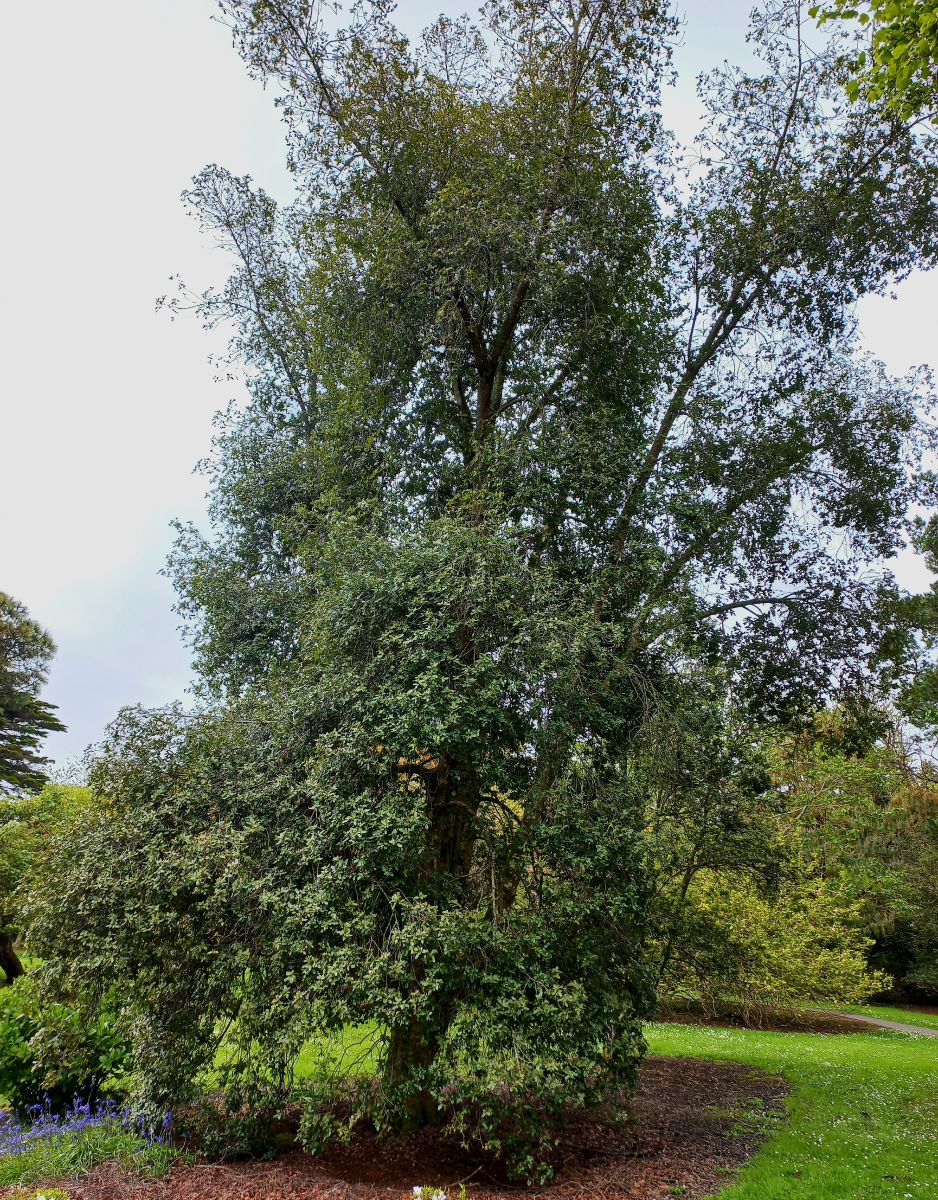
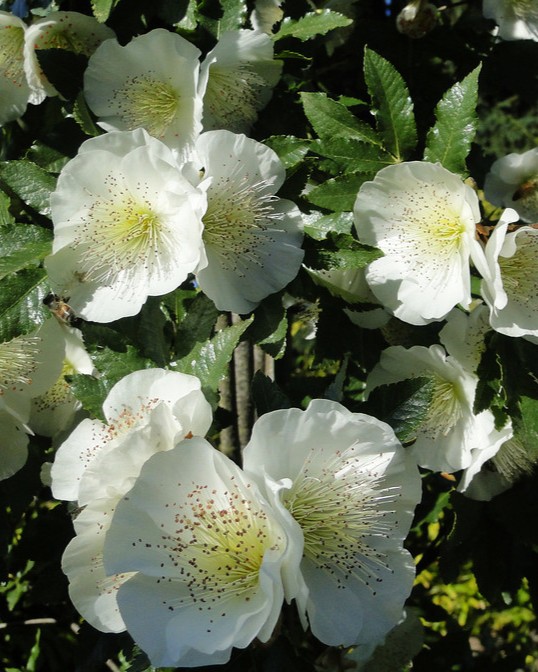
Gevuina avellana
The Chilean Hazel is a rare, monogenous tree that has survived the millennia. Trees of this family now exist in South America and Australia, confirming its common origin in Gondwana, the prehistoric mega-continent. The fruit is similar to the hazelnut, from which it takes its name. They are rich in oil and nutrients, with proven antioxidant properties. This relic from another age can be fragile, so it's important to take care of it.

.jpg)
.jpg)
Laureliopsis philippiana
This is another relic plant, originating in Chile and, more recently, in Gondwana. Its dark, glossy foliage and unique habit give it a special appeal that makes it a must-have. Its main trunk is slender and soaring, while all its branches are naturally weeping. Its light-coloured, easy-to-work wood has long been used to build homes in its native country.
A very rare plant in cultivation, it is nice to be able to contemplate it in a few places in Cornwall where it is perfectly acclimatised.

Luma Apiculata
We're crazy about the Luma. Its bark is exceptional, colourful, varied, luminous, exfoliated and spectacular. It's always a pure pleasure to marvel at its beauty. We've come across some remarkable, extraordinary specimens in Ireland at Mount Usher Gardens and in Scotland at Kennedy Castle. We can't wait to one day discover the Luma forest on the shores of Lake Nahuel Huapi in Argentina, where centuries-old trees, some over 600 years old, form sumptuous cathedrals.
.jpg)
.jpg)
Magnolia Fairy Cream
This variety of magnolia was selected in 2013 by the nurseryman Mark Jury in Tikorangi, New Zealand, for its long flowering period, several repeat flowerings and its generally compact habit. It forms a small tree that is easy to grow in pots. It is part of the Fairy Magnolia series and is a dream to behold with its multitude of light ivory cups. It is perfectly suited to the Cornish climate.
.jpg)
Maytenus boaria
A very rare plant, native to the Andes, in the windy valleys where it swings its delicate branches and light weeping foliage. At Trelissick, the subject is remarkable and it is a privilege to be able to experience a few moments of this rare and remarkable hope.
.JPG)
.jpg)
.jpg)
Pieris
What struck us at this time of year were the particularly intense hues of the new shoots of these magnificent Pieris. Far from the shrubs of our garden, the Trelissick Andromeda is a tree that catches your eye.
.jpg)
.jpg)
Pinus patula
It is native to Mexico and its long, drooping needles give it a unique look. Its emerald-green needles and ochre-coloured fruit provide a lovely contrast. The new shoots boldly challenge the weeping nature of the needles by standing up boldly.
.jpg)
.jpg)
Podocarpus salignus
It was introduced to England in 1849 by William Lobb via Veitch Nurseries. This Chilean conifer has a graceful, well-balanced appearance. It is classified as vulnerable by the IUCN due to deforestation for industrial plantations and fires. It is therefore important to conserve it in botanical gardens. It is regularly found throughout Cornwall, as well as in Scotland, Ireland and Brittany.
.jpg)
.jpg)
Schefflera taiwaniana
As its name suggests, it comes to us from Taiwan, where it could be described as the umbrella of subtropical mists, so profitable is the shade its palmate foliage provides. Its landscapes are clearly exotic. It is so vigorous that it is regularly found in glasshouses or in the open ground in milder climates. It is evergreen, but turns purple and bronze when temperatures fall below -5 degrees.
.jpg)
Schefflera delavayi
Like many plants from Yunnan in China, it was discovered around 1880 by Father Jean Marie Delavay. A shrub with a looser habit than its Taiwanese cousin, its appearance remains clearly exotic with its dark green, glossy evergreen leaves. It's a sure bet for gardens blessed with the spray of the Gulf Stream.
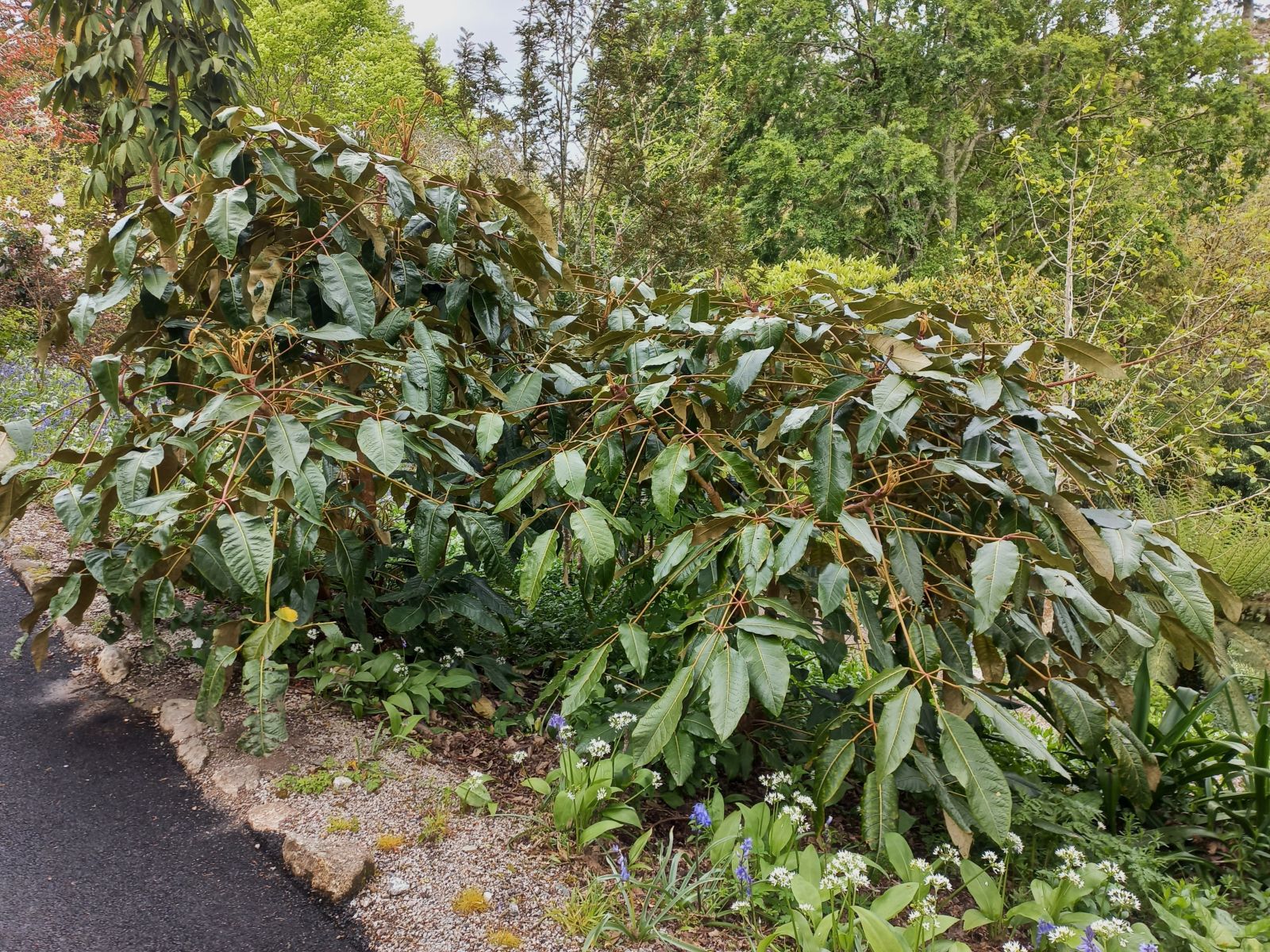
.jpg)
Drimys winteri
Native to the rainforests of Patagonia, this mythical tree is evergreen. Its leaves are aromatic, giving off the scent of pepper and cloves when crushed. Infused, they cure scurvy, and the tree was named after Captain John Winter, whose crew was ill. The sailors were saved thanks to its infusions. It is a sacred tree for the Mapuche people of Chile. It symbolises peace and resistance.
.jpg)
Balai de sorcière
This formation will always fascinate me and discovering one more is always an event. This one isn't specifically listed, but it's definitely a witches' broom, dense, compact and rather spherical. It looks pretty healthy. Insect bite, contamination by fungus or bacteria, the bud's genetics have been modified and its appearance dwarfed. Grafting this type of formation gives rise to numerous horticultural cultivars commonly known as dwarf or miniature conifers, depending on the size reached at adulthood.
.jpg)
Bénédicte Nicolas for Les jardins du Florilège
.JPG)
.JPG)
.JPG)